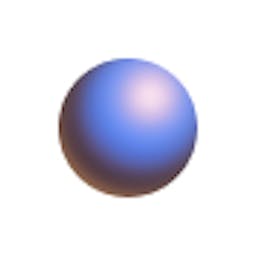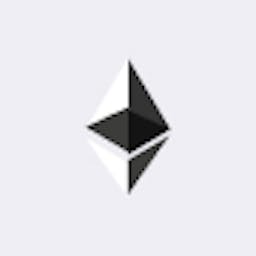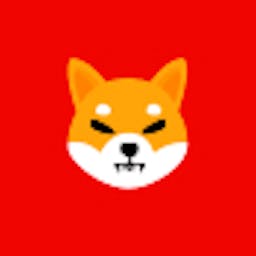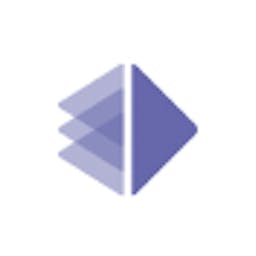Wigwam is the best  Zora blockchain crypto wallet
Zora blockchain crypto wallet

Why choose the Wigwam crypto app?
Work with Zora Testnets and Mainet
Buy Zora tokens, including native token, by using a credit card
Swap Zora-based tokens directly in the wallet
Possibility to connect the wallet to all Zora blockchain dAps: DeFi, DAO, Gamings, etc
How to get a Zora address in Wigwam web wallet
Create a wallet in Wigwam
Choose a Zora network from the dropdown menu
Copy you Zora address
Zora blockchain review
Zora is a decentralized protocol designed for the Ethereum blockchain, allowing users to buy, sell, and create NFTs without the need for coding knowledge. Zora utilizes the base ERC-721 NFT protocol enabling markets to be directly owned by token creators. Additionally, Zora has launched a layer-2 blockchain, which leverages Ethereum's security features and is constructed using Optimism's technology stack.
Origins and Vision
Zora Slava Kim and Jacob Horne are the cofounders of Zora Blockchain, they created Zora to empower creators in NFT space. By extending the ERC-721 NFT Protocol, Zora allows artists to create and sell NFTs while retaining control over their work and revenue. Zora aims to benefit creators from the resale of their work, by providing a foundational layer of code through its protocol that allows artists to dictate their revenue splits for secondary sales.
Key Milestones
The Zora Network was established in 2020 and was officially launched for the public on the Ethereum blockchain as a protocol in January 2021. It managed to raise nearly 8 Million in equity sales.
Zora announced a partnership with TRiCERA in April 2021 to promote more creativity in its protocol.
In March 2023, Zora introduced a new feature that allows creators to write NFT smart contracts.
Zora launched its Layer-2 network on Ethereum and Optimism in June 2023.
NFT giants like OpenSea and Mint.fun joined Zora on Ethereum and Optimism in July 2023.
What consensus algorithm does Zora blockchain use
The Zora Blockchain utilizes a Proof-of-Stake(PoS) consensus mechanism as the blockchain was structured to mimic Ethereum as closely as possible. In PoS validators create new blocks and validate transactions based on their amount of “stake” or collateral. Utilizing an energy-efficient and scalable consensus algorithm like PoS, Zora aims to establish a strong foundation for its ecosystem, facilitating seamless interaction among creators, curators, and buyers within a decentralized marketplace.
How Zora has solved problems with scalability and speed
Zora blockchain utilizes its layer-2 scaling solutions that are Optimistic Rollups to address the issue of scalability and speed. Zora is an L-2 solution built on the Op Stack, it operates above the Ethereum mainnet, where Optimistic rollup bundle transactions, process transactions off-chain and post them as a single summary to the Ethereum mainnet. This off-chain processing provides fast speed, low gas fees, and scalable transactions. Which allows the Zora blockchain to create new blocks every 2 seconds.
Zora blockchain relies on Ethereum blockchain for security and decentralization, it also employs fraud proofs where invalid transactions can be challenged. This method enhances Zora's security compared to sidechains or plasma chains, which depend on their own validators. Zora also fully supports the OVM (Optimistic Virtual Machine) server, ensuring that any dApps or smart contracts can work on Zora without any changes. This compatibility maintains the platform's decentralization and security as it allows developers to utilize existing Ethereum tools and frameworks.
Who are the Main Players in the Zora Blockchain
Validators are the key players in the Zora network who participate in the PoS consensus by staking collateral.
DeFi Ecosystem on Zora blockchain
The Zora Blockchain does not have a native token or a DeFi ecosystem in the traditional sense, its infrastructure like layer-2 scaling solution, interoperability with EVM and other L-2 solutions supports a wide range of decentralized applications (dApps) and DeFi. “Fabric”, “Zerion”, and “UniSwap” are a few of the most trending DeFi in Zora Blockchain.
NFTs Marketplaces on Zora blockchain
Zora blockchain has managed to attract many artists with its ERC-721 NFT Protocol which allows markets to be owned directly by token creators. Zora’s innovative approach of embedding marketplace functionality within the digital assets themselves, streamlined transactions, and captivated collectors to its platform. “Open Sea”, “Mint Fun”, and “SongCamp” are some of the top NFT marketplaces on Zora.
Tokenomics and gas usage on Zora
Zora as a layer-2 solution, does not have its own native token or specific tokenomics. It operates within the Ethereum ecosystem, utilizing Ethereum (ETH) as the currency for transactions, gas fees,s and minting media tokens.
Conclusion
Zora Blockchain is redefining the landscape of digital ownership and commerce with a unique set of smart contracts for creating media tokens, which represent the ownership and value of digital media assets. It has managed to simplify the process of releasing assets for sale in exchange for cryptocurrency with artists dictating revenue splits for secondary sales. Zora’s partnership with ColourXStudios, an aesthetic music platform that features emerging talents on Youtube with 7 Million subscribers is just a step in its long journey ahead.
FAQ
Zora blockchain doesn’t have a native token, hence it utilizes ETH as its gas fee.
Enter your public wallet address in the search bar of the Zora blockchain explorer to gain access to all your account history and transaction specifics.
Many popular projects are running on the Zora blockchain, such as Zerion, UniSwap, Fabric, Very Internet Person, Open Sea, Mint Fun, Safary, and many more.
To keep your crypto transactions secure and safe, using a private crypto wallet for your ETH is the best practice. Wigwam Wallet, Exodus Wallet, MetaMask Wallet, Trust Wallet, and Myether Wallet(MEW) are some noteworthy wallets to consider.
Open MetaMask in your browser, access the profile icon at the top-right, and choose "Settings" from the dropdown. Navigate to "Networks," then click "Add Network" Opt for "Add a network manually" and input the following details:
- Network Name: Zora Blockchain
- RPC URL: https://rpc.zora.energy
- ChainID: 7777777(0x76adf1)
- Symbol: ETH
- Block Explorer URL: Etherscan
Save your changes by clicking the "Save" button.





